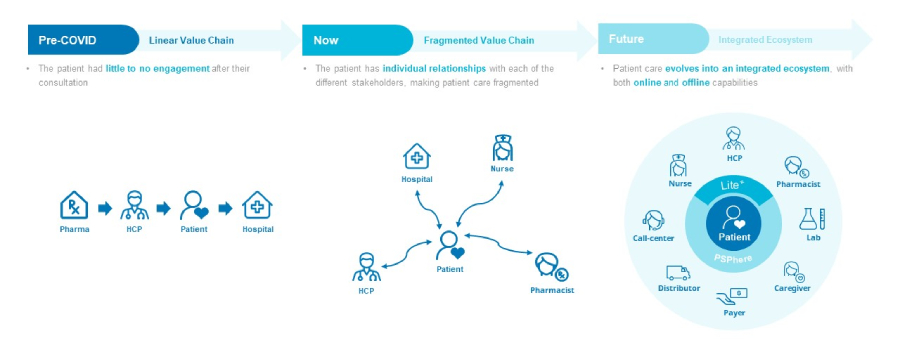How Technology is Transforming the Future of Patient Care in Asia

Compared to other consumer-facing industries that experienced disruption over the last two decades, healthcare had remained largely unaffected. The value-chain or care delivery model had gone unchanged, despite a number of relatively piecemeal advancements in areas such as the move to electronic health records during doctor consultations or the use of tablets or video calls for physician detailing by biopharmaceuticals and medical device companies.
The emergence of HealthTech, the new disruptor in the value chain over the last decade, has signaled the shift from old to new. As with most things, the global COVID-19 pandemic has supported the acceleration of trends that were struggling to gain wide-scale adoption only fourteen months ago. Be it telemedicine, remote monitoring or filing an app-based insurance claim, it is quite clear that these technology-backed services are here to stay and still in their infancy in development – look at your iPhone now and think about what it looked, felt and operated like ten years ago!

At a macro-level, the traditional linear value chain (see figure above) for biopharmaceutical and medical device companies is being shifted, through the aid of technology. Care used to be delivered in a hospital or doctor’s office with the doctor making all the decisions for the patient. Today’s patients are ever more educated and knowledgeable about their symptoms, and will often consult “Dr. Google” for a prognosis before deciding if they will make an appointment at the doctor’s office or teleconsultation. The second shift that’s happening is that care takes place increasingly in a community-based setting. This can be at home, a pharmacy and even the workplace.
At DKSH, our proximity to the ground and presence across Asia means that we saw this trend early and decided to take the driver’s seat in shaping how healthcare will be consumed by patients in this rapidly developing region. As the world was going into lockdowns in 2020, we launched the DKSH PSP Cloud. This serves as the backbone of our Patient Solutions Programs (PSPs) offering for biopharmaceutical and medical device companies.
The DKSH PSP Cloud allows us to have two-way engagement with patients on your drugs and devices so we can help solve their problems and roll-out new solutions to the issues they face throughout their care or patient journeys. It also allows them to interact with other stakeholders who we believe will be critical in delivering cost-effective and high-quality care in line with how healthcare will be consumed in the future. Simply put, the patient is at the center of the patient experience and receives help from the stakeholders around them. The stakeholders will, in turn, get a feedback loop from the data exchanges through these digital-backed interactions that gives them a chance to improve care further.
Our Patient Solutions will give your products and devices the service offerings they need to get patients the positive health outcomes they deserve.
In our next article, we will talk about PSPs and how we see their role evolving for patients and healthcare professionals in Asia and also for the biopharmaceutical and medical device industries.